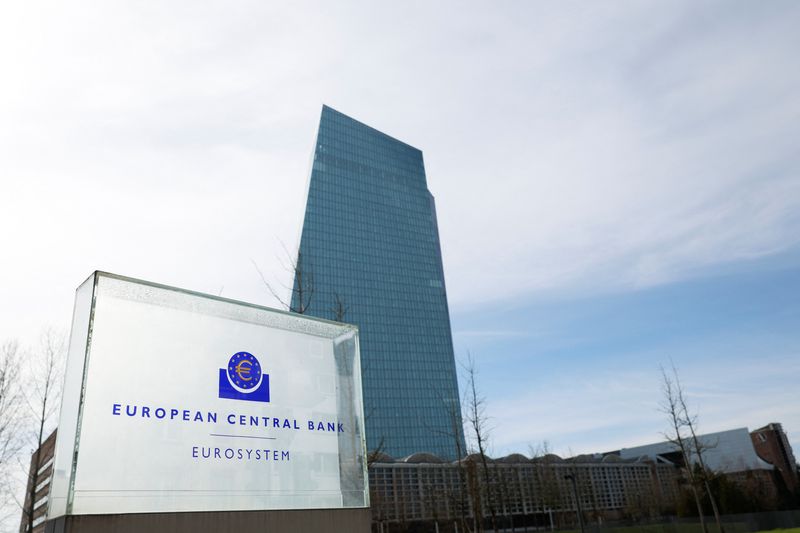By Francesco Canepa and Balazs Koranyi
FRANKFURT (Reuters) -The European Central Bank pushed back against bets on imminent cuts to interest rates on Thursday by reaffirming that borrowing costs would remain at record highs despite lower inflation expectations.
Laser-focused on fighting the most severe bout of inflation in a generation, the euro zone's central bank left borrowing costs unchanged and did not even hint at a possible reduction.
ECB President Christine Lagarde highlighted instead that inflation would soon rebound and price pressures remain strong. That was in stark contrast to the more dovish tone taken by her U.S. Federal Reserve counterpart Jerome Powell on Wednesday.
"We don't think that it's time to lower our guard," Lagarde told a news conference. "There is still work to be done ... that can very much take the form of holding (rates)."
Lagarde, who described herself as "in COVID recovery mode" and spoke more quietly than usual, said policymakers "did not discuss rate cuts at all".
In a smaller policy change, the ECB unveiled plans to phase out its last surviving bond-buying scheme - a legacy of the COVID-19 pandemic.
"It's definitely not a shift to the dovish side like the Fed," Mohit Kumar, chief European economist at Jefferies, said. "Rates will need to be kept at these levels for some time."
Inflation in the euro zone stood at 2.4% in November although it was expected to rebound somewhat in the coming months due to some tax changes and a lower basis of comparison a year earlier.
While acknowledging that underlying price pressures were also easing, Lagarde said domestic inflation, largely driven by wage costs across the 20 countries that use the euro, was "not budging".
"We need to better understand what is happening there," Lagarde said of those wage dynamics, and to what extent higher salaries would be absorbed by companies.
In her only hint at the timing of a possible rate cut, Lagarde said the first half of next year would be particularly "rich" in data, implying that a move was unlikely before June or July.
Traders only slightly trimmed their bets on ECB rate cuts, which are now seen starting in April rather than March and totalling nearly 150 basis points next year, compared to as much as 160 basis points before Thursday's decision.
That would be a sharp reversal from the sequence of 10 consecutive increases that ended in September.
"We think that it would require a sharper economic downturn and/or inflation sustainably falling below 2% to see the central bank cutting rates by as much as ... currently priced in," Carsten Brzeski, global head of macro at ING, said.
After Thursday's decision, the ECB's deposit rate stays at a record-high 4%. It was at minus 0.5% in July 2022.
WEAKER GROWTH AND INFLATION
The ECB's updated economic projections pointed to lower inflation and growth, particularly for next year.
ECB staff expect headline inflation to average 5.4% in 2023, 2.7% in 2024, 2.1% in 2025 and 1.9% in 2026, closing in on the bank's 2% target.
Lagarde repeatedly pointed out however that those forecasts were based on market prices before traders ramped up bets on ECB rate cuts earlier this month.
This came on the back of a lower-than-expected inflation reading for November and comments from ECB board member Isabel Schnabel that were perceived as dovish.
A sharp fall in bond yields since then has eased borrowing costs, therefore undoing the ECB's tightening and potentially helping fuel inflation.
Bonds were given a further boost on Wednesday when the Fed, the world's most influential central bank, signalled that lower borrowing costs would come next year, with policymakers indicating up to three cuts.

The rally in bond markets has had a silver lining for the ECB, too, however, as it allowed it to wind down its Pandemic Emergency Purchase Programme, unveiled at the onset of COVID to stabilise markets and fight off the threat of deflation.
This was due to run in full until the end of next year but, with no stress in markets, the ECB said it would replace maturing bonds only through June and then phase out reinvestments in the second half of the year.
